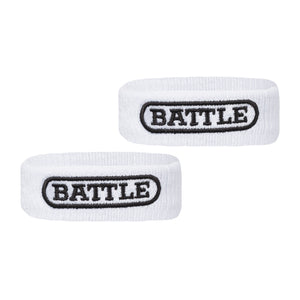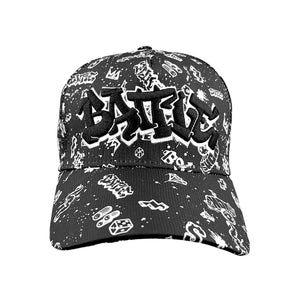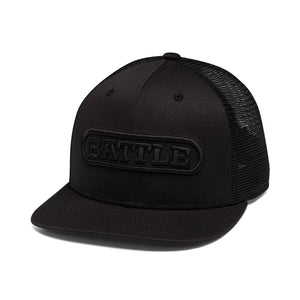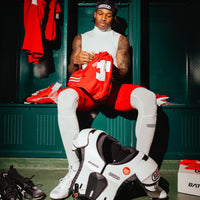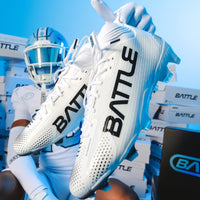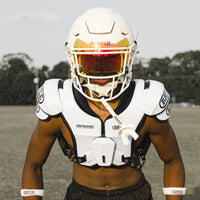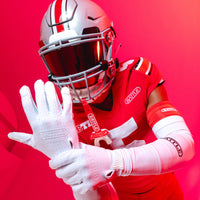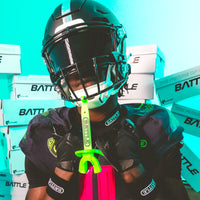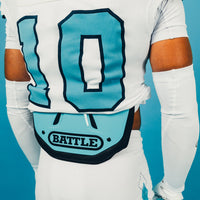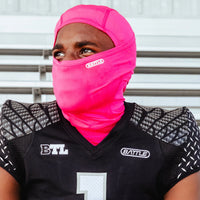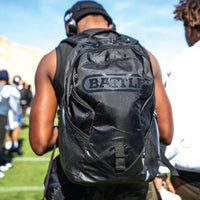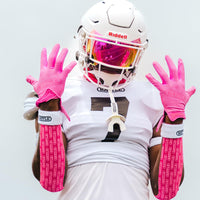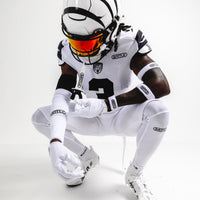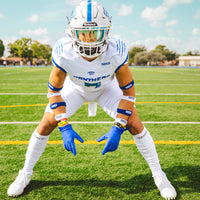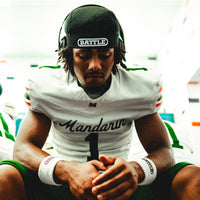When it comes to choosing the right football cleats, there’s no one-size-fits-all answer. A pair of football cleats should match your position, style of play, and comfort preferences. Some football players crave maximum ankle support, while others prioritize agility and a lightweight feel. That’s why the cleat cut — high-top, mid-top, or low-top — matters so much.
The decision to buy football cleats isn’t just about style. It’s also about finding the balance between support, mobility, and traction so you can dominate every snap on the football field. Let’s weigh down the pros and cons of each cleat cut and help you select football cleats that are built for your game.
High-Top Cleats: Maximum Ankle Support
High-top football cleats are all about stability and protection. With collars that rise above the ankle, these football shoes lock you in for a secure fit that reduces the risk of rolling or twisting.
- Extra ankle support - High-tops provide the most cushioning around the ankle joint, which is ideal if you need extra stability. Linemen, tight ends, and players who experience frequent contact benefit the most. A sturdy cleat helps prevent sprains during pileups and blocks.
- Built for power - These high-cut cleats are heavier and sometimes less flexible, but the trade-off is extra stability when pushing off the line or anchoring against defenders.
Because cleats are heavier, high-tops may limit agility compared to lower-cut designs. Players who need quick cuts and lateral bursts might find them bulky.
If your position requires leverage and contact—like a lineman holding ground or a tight end battling in the trenches—high-top cleats are some of the best cleats you can wear.
Low-Top Cleats: Unmatched Agility
On the other end of the spectrum are low-cut cleats. Lightweight and flexible, these football cleats offer freedom of movement that supports lightning-quick speed and sharp cuts.
- Agility first - A low-top football cleat sits below the ankle, reducing weight and giving players maximum mobility. Wide receivers, quarterbacks, and cornerbacks prefer them for the ability to accelerate, stop, and change direction seamlessly.
- Lightweight feel - Less material around the ankle translates to a breathable, fast-moving shoe. This footwear is perfect for athletes who value speed and finesse over brute strength.
- The trade-off - Low-tops provide less ankle support, which can raise the risk of injury during hard cuts or awkward landings. Players who need stability should weigh this carefully.
For skill players chasing separation or defensive backs sticking with receivers step for step, low-cut cleats may be the right pair of football cleats to unleash your speed.
Mid-Top Cleats: The Best of Both Worlds
Not sure if you need a high-top or low-top? Enter the mid-top cleats—a versatile option that blends support with mobility.
- Balanced design - A mid-top football cleat rises just high enough to provide moderate ankle protection without locking you down like a true high-top.
- For hybrid players - Running backs and linebackers, who need to strike a balance between speed and power, often find mid-tops ideal. They get better traction and a stable platform while still keeping the flexibility to cut and accelerate.
- Middle ground - Mid-tops don’t provide the full ankle support of high-tops or the full agility of low-tops. But for many players, this balance is exactly what they need to perform.
When you want football cleats for your position that do it all, mid-top cleats deliver.
How to Choose the Right Football Cleat
With so many football shoes on the market, finding the right type of football cleats comes down to more than just preference. Here’s what to consider before you buy football cleats:
Position and Playing Style
- Linemen & tight ends - Choose high- or mid-top cleats for the most ankle stability and power during contact.
- Receivers, quarterbacks & cornerbacks - Go for low- or mid-cut cleats to promote speed and mobility.
- Running backs & linebackers - Go for mid-top cleats to strike a balance between agility and support.
Comfort and Fit
The fit of your football cleats matters as much as the cut. Take note of the following when it comes to how your football cleats should fit:
- Cleats should be snug from heel to forefoot, with just enough room for your longest toe.
- Cleats that are too tight can cause blisters. Meanwhile, cleats that are too loose decrease stability.
- Always try them on with your football socks and move like you would on the field to check for comfort.
League Regulations and Playing Surface
- Most youth leagues and schools require molded cleats made of rubber or plastic. Metal studs are typically banned.
- On natural grass, detachable cleats with longer studs provide grip, while on turf, molded cleats or turf-specific shoes are best.
- Always check league rules before investing in a pair of football cleats. It’s best to make sure they’re allowed before game day.
Stay Ready for Game Day with Battle Sports
At Battle Sports, we know every football player has unique needs. That’s why our AstroFly line is designed to give athletes the support you need, no matter your position or playing style.
From youth football cleats in developing leagues to elite designs tested for performance, Battle Sports delivers the best football cleats to keep you explosive, stable, and ready every down.
Lace up with Battle, strike the balance between comfort and performance, and step onto the football field knowing you’re wearing a pair of cleats built to outlast, outrun, and outshine.


